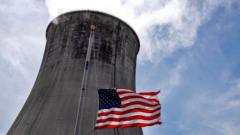Google's Earthquake Alerts (AEA) system has come under fire after failing to adequately warn millions during the devastating earthquakes that struck Turkey on February 6, 2023. Despite having access to technology capable of giving early alerts to approximately ten million people within a 98-mile radius of the epicenter, only a mere 469 "Take Action" alerts were distributed, which signal the highest level of risk and can provide users with up to 35 seconds of warning to seek safety.
In stark contrast, Google reported that half a million individuals received a lower-level "Be Aware" warning, meant for lighter shaking and not designed to override silent modes on devices. The flawed performance led many affected, particularly those who were asleep when the first, 7.8 magnitude quake hit at 4:17 AM, to remain unalerted as buildings collapsed around them.
Google's initial claim that its system "performed well" has since been contradicted as investigations reveal significant underperformance due to errors in detecting earthquake magnitude. The company's system relies on data gathered from Android devices, which constitute over 70% of mobile phones in Turkey. The tragic reality is underscored by the loss of over 55,000 lives and more than 100,000 injuries, prompting serious questions about the reliability of such technology during emergencies.
Post-event analyses conducted by Google indicated that the system underestimated the first earthquake's magnitude, while it did send out subsequent "Take Action" alerts for the second quake, but still, the numbers were far from adequate. Following these earthquakes, Google adjusted its detection algorithms, stating that if the systems had been correctly calibrated prior to the quakes, it would have dispatched 10 million "Take Action" alerts and an additional 67 million "Be Aware" alerts to individuals located further from the epicenter.
Experts like Elizabeth Reddy, an assistant professor at the Colorado School of Mines, expressed frustration over the considerable delay in identifying these issues—a delay that ultimately cost lives. Concerns also arise over the potential misplaced confidence that some nations might put in Google’s systems, leading to inadequate disaster preparedness on a broader scale.
While Google maintains that its alert system is a supplementary measure and not a replacement for national warning systems, critics urge for transparency in performance metrics and greater investment in comprehensive and verified alert technologies. As international inquiries surrounding the effectiveness of Google's AEA system continue, the tech giant's future commitments to improvement will be closely scrutinized in efforts to ensure that lessons from this disaster are duly learned and applied.

















